- Home
- >
- Preservation Archaeology Blog
- >
- Tracking Canals in the Safford Basin: A Tale of Fa...
By James A. Neely, Professor Emeritus, University of Texas at Austin
This story begins in the summer of 1994, when I accompanied Kyle Woodson—one of my graduate students at the University of Texas at Austin—into the field to get him started on excavations for his master’s thesis project at the now well-known site of Goat Hill. Seeing that Kyle was most competently conducting that task, I began to wander around the site to see what I could see. It was then that I discovered the first of many water management features, a very clearly defined rock-bordered canal (Figure 1). This led to a further examination of the Lefthand Canyon area, with Goat Hill situated at its southern extreme, and my recording of an extensive agricultural complex of terracing and canals, evidently associated with the Goat Hill site.
The Lefthand Canyon survey led me to expand my research in the Safford Basin. My next project was to attempt a reconstruction of the prehistoric Gila River canal systems in the area (Figure 2). My collaboration with William E. Doolittle in a study of the Safford Valley prehistoric gridded fields (Figure 3) followed. Since my retirement—as I do not play golf—I have undertaken two additional research projects: a stratified survey of the archaeological sites and canal systems in the Marijilda, Rincon, and Graveyard Wash area (Figure 4) and a survey focused on recording the bajada canal systems emanating from the north side of the Pinaleño Mountains (Figure 5).
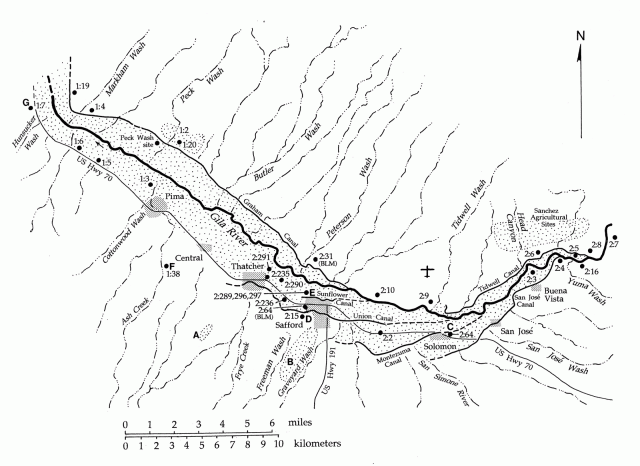
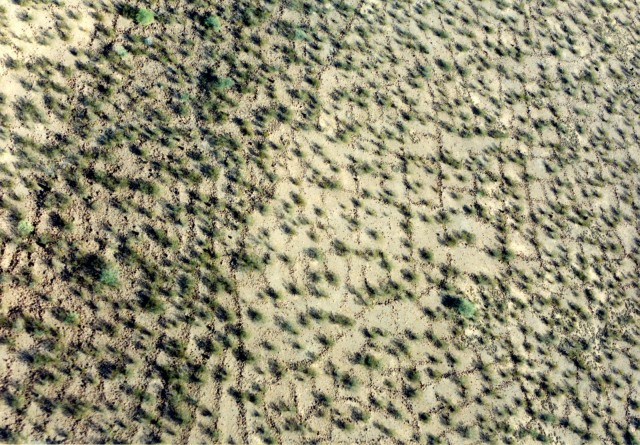
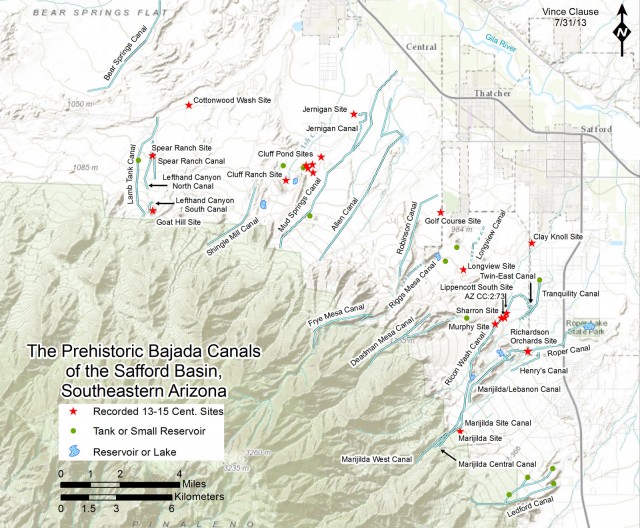
Since 1994, I have been dividing my research between the Safford Basin and the Tehuacan Valley of southern Puebla, Mexico, working on reconstructions of the prehistoric agricultural strategies and water management (Figure 6). In each of these areas, the preservation of ancient fields and water management infrastructure is excellent, and the technologies are extremely varied and quite sophisticated.
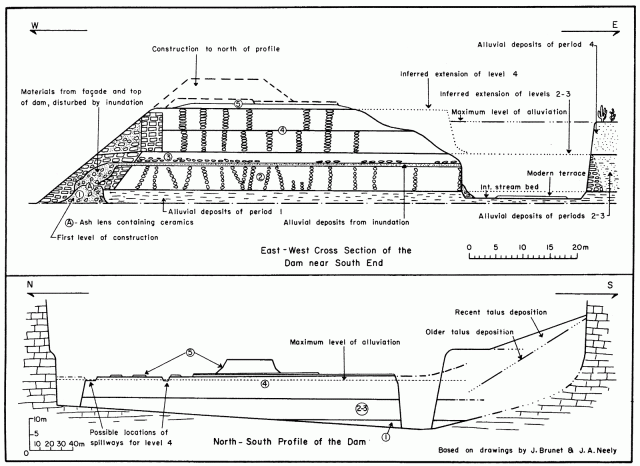
During my early days of fieldwork in the Safford Basin, a number of dedicated, hard-working students from the University of Texas provided assistance. Safford resident Everett Murphy, then an archaeological site steward for the area, also most ably assisted me. His knowledge of the landscape and sites was invaluable and saved me much time in the field. Most recently, Thatcher resident Don Lancaster has assisted me, both in the field and in searching satellite imagery, in the expansion of my study of the bajada canal systems extending northward from the Pinaleño Mountains. His love of walking in the desert has greatly augmented the number of bajada canals in our assemblage.
So, where does the “… Tale of Fate …” come into this story? Well, 1994 marked 34 years since I first visited the Safford Basin as a graduate student at the University of Arizona, on a spring semester 1960 Southwestern Archaeology field trip led by Drs. Raymond Thompson and Emil Haury. One stop on the field trip was the Safford Basin, where Thompson and Haury related to us neophytes the importance and potential of the basin in the study of the then relatively young concept of the Salado Culture. Sidetracked, I strayed into projects in Ecuador, Iran, Mexico, and other parts of the American Southwest before I returned to the Safford area, where I will begin my 54th year of fieldwork this spring.
5 thoughts on “Tracking Canals in the Safford Basin: A Tale of Fate 34 & 54 Years in the Making”
Comments are closed.
Explore the News
-
Join Today
Keep up with the latest discoveries in southwestern archaeology. Join today, and receive Archaeology Southwest Magazine, among other member benefits.
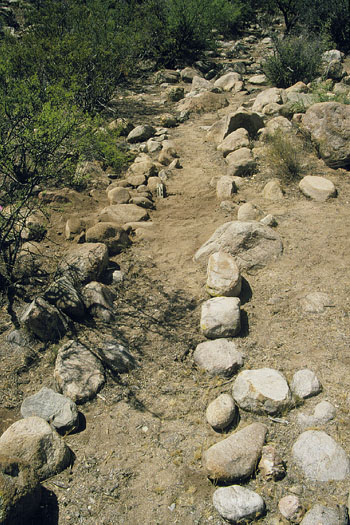
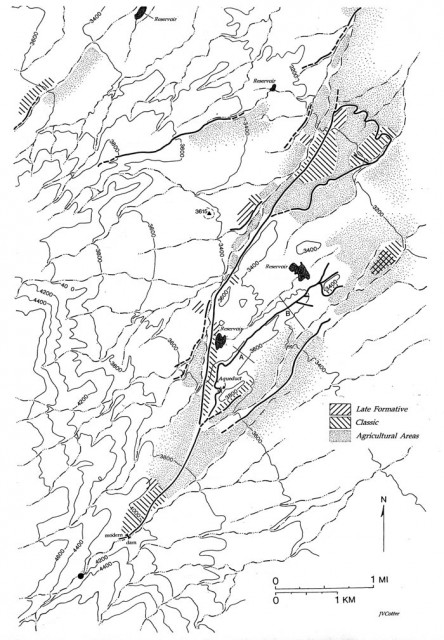
Super Awesome Jim
Dan
Additional ongoing resources on the Safford area bajada hanging canals can be found through http://www.tinaja.com/tinsamp1.shtml
don@tinaja.com
Wow. I’ve got to get out there!…thanks, Jim
I visited the Marijilda site with Bill Gillespie of the BLM several years ago, and observed the amazing canals and field systems. Thanks for expanding my acquaintance with this incredible ancient technology!
I recently visited the area with Jim and Don. Very impressive; truly a cultural landscape. Great illustrations, by the way.